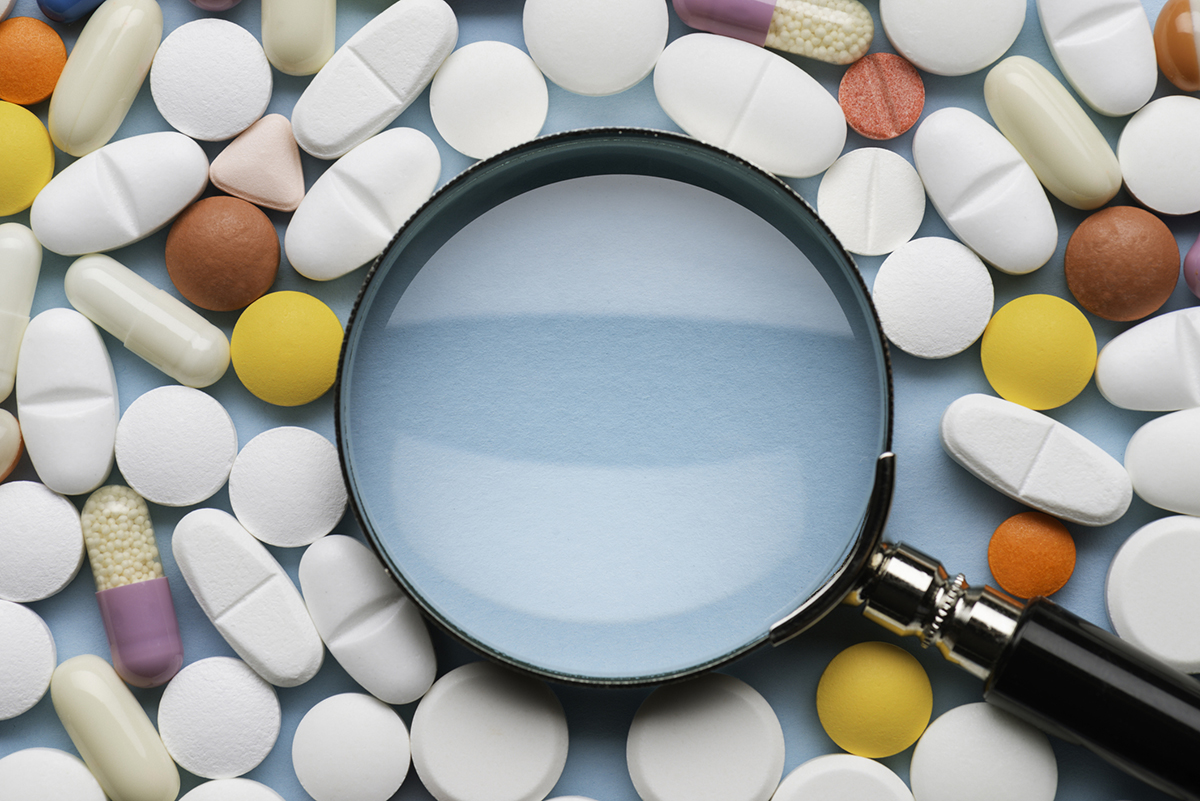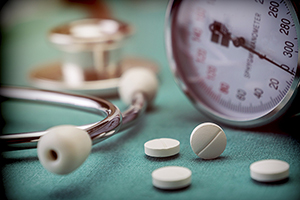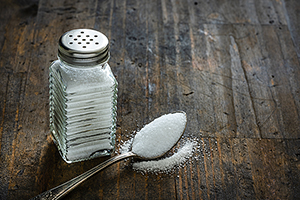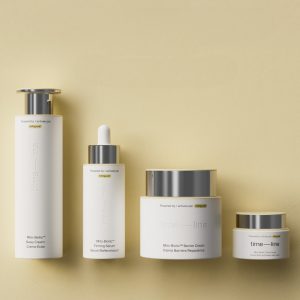If we look at the issue scientifically, hypertension or high blood pressure is not in itself an illness. Somewhere along the line ingenious medical researchers developed a method for assessing the internal blood pressure of arteries in the arm, and medicine now equates these rather arbitrary numbers with critical health outcomes. Low blood pressure makes you feel woozy, medium blood pressure makes you feel just right and safeguards your health, and high blood pressure puts you at risk for disease.
Blood pressure fluctuates ordinarily for short periods each day. But if it stays up, it’s a major risk for heart disease, stroke and kidney disease. High blood pressure is all the more insidious because it’s a silent killer, it produces no overt symptoms, at least when it is in the initial moderate stages. Current estimates are that 40 percent of the adult population may suffer from high blood pressure. At least half that number may be undiagnosed and untreated.
What is high blood pressure? The first number refers to systolic blood pressure. While initially thought to be less important than diastolic blood pressure (which should always be less than or equal to 90), its significance is becoming better appreciated. One study showed higher incidence of memory deficits in older individuals correlated with systolic blood pressure above 140.
One of the difficulties of getting a meaningful reading is that blood pressures can change drastically, even when you’re at rest, especially in response to anxiety or even mild emotional stress. Hence the term “white coat syndrome” in persons whose blood pressure rises whenever they are in a doctor’s office. This extreme sensitivity to environment and expectations means that a single blood pressure reading does not tell us too much in and of itself. A diagnosis of hypertension can’t really be made until a series of readings are performed on different days. Unfortunately, research shows that blood pressure medication often is instituted without adequate rechecking. If a doctor suspects white coat syndrome, you may need to learn how to take readings at home, under “low pressure” conditions. Simple home blood pressure monitors, some that inflate automatically, facilitate blood pressure self-care. If I’m getting high readings from a patient in my office, I’ll definitely get them to confirm these readings in a more relaxed setting.
There are other problems with blood pressure readings in medical settings. These include observer error—you may have a “green” or inexperienced medical assistant taking the reading. And the sphygmomanometer itself may be out of kilter as studies often confirm. Doctors may have purchased these instruments early in their careers and not had them checked out and calibrated on a regular basis. There are probably too many people who get a diagnosis of high blood pressure and a prescription for medication on the basis of a faulty reading. (On the other hand, there are clearly too many people who are going undiagnosed because they don’t have regular checkups.)
There’s another option if you feel that the stress of the doctor’s office or clinic environment may be affecting your blood pressure readings, or if you want to confirm that several high readings are really telling you something. This is called ambulatory blood pressure monitoring, and it enables you to find out what your blood pressure is over the course of a day, as you go about your normal activities. You may discover that you do have some peaks of high blood pressure a few times a day, and you’ve been diagnosed with high blood pressure on the basis of those peaks, which might just happen to occur in stressful situations such as your visit to the doctor’s office. And the rest of the time your blood pressure is normal or low. Unfortunately, ambulatory monitoring has not been very well reimbursed by health insurance, though it probably should be, given the wild variations that can occur in a spot-check of blood pressure.
Can your eye doctor diagnose hypertension?
The sphygmomanometer is not the only means of detecting high blood pressure. One of the telltale signs of high blood pressure is an enlarged heart—the heart muscle gets bigger because it’s working harder—just the way a muscle in your arm gets bigger if you exercise it. If you’re concerned about whether hypertension has begun to compromise your health, a chest X-ray, an echocardiogram or an EKG can reveal if your heart is enlarged. Hypertension also affects the eyes and can cause telltale changes or even little hemorrhages in the tiny blood vessels at the back of your eyes. An eye doctor can spot this right away and confirm that your blood pressure is not just a transient glitch. In fact, eye doctors are trained to look for a distinctive picture that indicates extreme hypertension, the kind that would require immediate hospitalization.
Why high blood pressure? Is it an inevitable byproduct of aging? Probably not. Studies suggest that high blood pressure is related to civilization, since blood pressure rises very little in individuals in tribal societies that have not adopted Western lifestyles. There, natural diet and abundant exercise prevent the process of blood vessels stiffening that is thought to be inevitable in the West.
Actually, blaming high blood pressure on hardened, calcified arteries is a wee bit unsubtle. Factually, even before obvious encrustations develop in the arterial wall, a change occurs in the responsiveness of endothelial cells that line blood vessels, to messages from the body’s involuntary control system for blood pressure. The autonomic nervous system is responsible for the adjustments of blood pressure that occur with change of position and exercise. The familiar “fight-or-flight reaction” automatically prepares for escape and shunts blood away from vulnerable hands and feet, which are often injured in combat. Hence core blood pressure has a tendency to transiently rise with perceived danger.
The trouble is that in modern society dietary factors, stressful life circumstances and environmental pollutants conspire to damage the endothelium and screw up the delicate system that signals these cells to produce arterial smooth muscle relaxation or constriction. For example, smoking and even secondhand exposure to tobacco smoke have been shown to blunt the endothelial cells’ responsiveness to signals that normally prompt arteries to relax. Additionally, gradual destruction of the kidneys’ filtration abilities causes fluid buildup in the arteries, necessitating the use of diuretics to make the kidney release excess fluid and sodium.
What causes high blood pressure? Well, the frustrating answer is that most cases are classified as “essential hypertension,” the fancy medical term for hypertension that has no known triggers. In fact, there are probably a complex array of causes including genetic factors, stress, sodium intake, environmental pollution, excess production of insulin, overweight and other specific nutritional factors. All these factors may operate simultaneously in a given individual or only one or two may account for that person’s high blood pressure. Patients with hypertension come in all shapes and sizes: some are thin, some are overweight, some ostensibly relaxed, others nervous. Some have family histories of high blood pressure and others do not.
There also are misconceptions as to the major reasons for high blood pressure. It is commonly supposed that the most appropriate dietary intervention for lowering blood pressure is salt restriction. For many this means avoiding the salt shaker, but studies show that the sodium in one’s diet comes mostly from foods that are already laden with salt. In fact, only 12-15 percent of the sodium in the diet comes from salt added at meal time. Additionally many people respond little if at all to sodium restriction. Others very clearly do. The reason for this may be differences in historical circumstances where some populations seem to acclimate to high salt intakes. This seems more likely to be the case in certain parts of Europe where salt has been used for millennia as a valuable commodity designed to help preserve food. The situation is reversed in traditional African cultures, especially in landlocked regions where gold was gladly traded for salt until the late 19th century. This may be part of the reason why African Americans have a genetic susceptibility to salt intake.
Some people don’t seem to be sensitive to sodium and there are even some who have paradoxical inverse reactions to salt intake: When they restrict sodium intake their blood pressure goes up. And there are people with chronic low blood pressure who have to maintain some salt in their diet because it helps their kidneys maintain blood pressure within a normal range. However it is thought that chronic exposure to excess sodium in the diet for an entire lifetime may shift metabolism toward higher blood pressure. The trouble is that once this has happened, simply withdrawing sodium may not reverse the trend. High salt levels may set in motion permanent hormonal changes or damage kidney function so that at certain points you just can’t eliminate salt and go back to normal blood pressure.
Actually, an even more key factor in the development of high blood pressure may be the circulating level of insulin. In patients who suffer from carbohydrate cravings associated with high cholesterol and triglycerides, particularly with features of diabetes, high blood pressure can be reduced by minimizing carbohydrate intake. Hence, subtract the salt shaker, but also basta on the pasta and hold the Hostess Twinkies.
Does this mean that a low saturated fat diet has nothing to do with keeping blood pressure down? The surprising answer is that a high meat diet laden with saturated fat may indirectly contribute to insulin resistance by clogging cell receptors that determine insulin sensitivity. It is as if all those saturated fats may “glom up” the cellular machinery and initiate a vicious cycle of insulin overproduction, weight gain and subsequent carbohydrate cravings, which may in turn lead to high blood pressure and diabetes.
This is the so-called syndrome X theory, which predicts that carbohydrate restriction will help a certain subset of hypertensives, especially those with elevated “waist to hip ratios.” (Calculate this by simply measuring the circumference of your waist and the circumference of your hips and dividing the waist circumference by the hip circumference. If the result is greater than 1.0 in a male or if it’s greater than .8 in a female, you may be prone to syndrome X. The solution to syndrome X is to take nutrients such as fish oil, chromium and magnesium and to adopt a diet relatively low in saturated fat as well as moderate in carbohydrates such as my Salad and Salmon Diet. (For details, see Tired All the Time, available in paperback from amazon.com.) This diet has cured high blood pressure in well over half of my hypertensive patients.
Other nutrients that can help high blood pressure include calcium, magnesium and potassium. A recent study showed that 1,200 to 1,500 mg of calcium daily could reduce high blood pressure associated with pregnancy in women prone to a dangerous condition called preeclampsia. Potassium also seems to play a role in lowering blood pressure, particularly in African Americans. Magnesium has such a profound blood pressure lowering effect that patients given high doses of magnesium by IV sometimes complain of low blood pressure and temporary wooziness. Different individuals have different degrees of response to these nutrients but many people, perhaps about 40 percent of the population, respond to supplements of these minerals with a drop in blood pressure. It’s interesting to note that a low-fat vegetarian diet, the kind prescribed by Dean Ornish, is inherently high in magnesium and potassium and low in sodium. In green plants every chlorophyll molecule has a core of magnesium just as every hemoglobin molecule has a core of iron in animals, so green vegetables inherently deliver a lot of magnesium. Plant foods also have a much higher potassium-to-sodium ratio than animal foods (including dairy products), so vegan diets sometimes do the trick for people with high blood pressure.
One of the less recognized causes of high blood pressure is heavy metal toxicity from our environment. Studies of Europeans indicate that cadmium plays a major role in susceptibility to kidney disease and high blood pressure. This affects not just industrial workers but people who live in proximity to industrial zones and urban dwellers. More startling still is a study published in the prestigious Journal of the American Medical Association in April 1996 showing that lead levels are even more important than we thought in the causation of high blood pressure. The association between high blood pressure and lead dates back to the era of leaded gasoline in the 1950s and ’60s. But this new study suggests that lead levels measured in bone with a special new X-ray technique are even more important than smoking, salt consumption, dietary calcium or alcohol intake in determining who gets high blood pressure. Only overweight and family history of hypertension played more important roles than lead burden in predicting high blood pressure.
This makes sense because of the critical epidemic of high blood pressure in inner city poverty groups who may live in deteriorated housing with peeling lead paint or lead pipes. While high blood pressure often is attributed to social stress, poor diet or hereditary in ghetto dwellers, lead toxicity may be an important, but often ignored, factor. But ultimately we’re all exposed to varying levels of lead and getting the lead out may be an important option for reversing high blood pressure. Chelation therapy with intravenous EDTA has long been used by physicians including myself in the treatment of heart disease, and I’ve noticed that it often reverses hypertension in my patients.
Exercise, too, plays a role in lowering blood pressure. When aerobic exercise or strength training is performed, blood pressure temporarily goes up but then recedes back to normal the way your pulse rate increases with exertion, then settles back down to a slow rate. A recent study looking at African American hypertensives showed that 40 minutes of daily stationary bike exercise could reverse even moderately severe high blood pressure.
Stress, too, plays a role in high blood pressure. One of the difficulties of getting a meaningful blood pressure reading is that blood pressure can change drastically, especially in response to anxiety or mild emotional stress. Hence the white coat syndrome, affecting the person whose blood pressure rises when they’re actually having their blood pressure measured by a professional in a white coat. People with wide fluctuations in their blood pressure depending on their emotional state may be “hot responders” and deserve consideration for stress reduction measures such as biofeedback, yoga and meditation. A recent study of hypertensives in Oakland, California, showed that use of daily transcendental meditation could produce significant reductions in blood pressure.
Specific agents that lower blood pressure include garlic, fish oil, coenzyme Q10, L-taurine and extract of hawthorn berry (Crataegus).
With regard to treatment of high blood pressure, I generally reserve medications for only the most challenging patients or for those unwilling to go through the complex lifestyle adjustments that may be necessary to overcome their tendency toward high blood pressure. New medications abound, but most cause side effects. Simply providing hypertensives with a quick drug fix deters them from making necessary healthy adjustments in diet, exercise and stress coping. Foregoing the drug route, at least temporarily, preserves the impetus for constructive change. Thus blood pressure can be looked at as a barometer of degenerative tendencies whose sources we can identify and eliminate.






